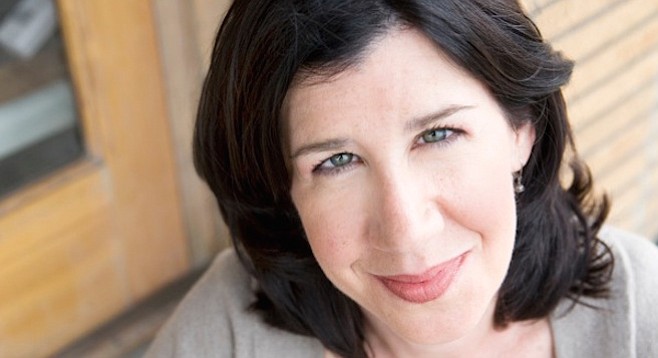 Facebook
Facebook
 X
X
 Instagram
Instagram
 TikTok
TikTok
 Youtube
Youtube

I’m asking veteran actors to name five dream roles and say why. The answers not only reveal aspirations, they may put an idea in the minds of artistic directors and producers — even choices that seem outside the box.
Double Craig Noel Award nominee for 2015: Maggie Carney
1.) Annie Wilkes in Misery, by Stephen King and Simon Moore. “This is a love story, albeit twisted. We see Annie as a crazy, leg-crushing kidnapper. But as an actor I can’t play crazy. I have to play a desire so passionate that it results in taking actions that appear irrational. That kind of single-minded focus is a thrill to play. And finding some kernel in me that echoes her darkness would be thrilling and terrifying.”

2.) Mary in The Testament of Mary, by Colm Tobin. “The mother of Jesus tells the story of her son’s crucifixion and questions his death and divinity. This solo performance is a very dark piece, filled with Mary’s personal pain. The theme is loss of a child…now, I don’t have kids, but I do know loss. And being raised Catholic, I’ve always had a tender spot for Mary. Being able to explore themes of mother/child, sacred/profane while chewing my way through Tobin’s dense, poetic prose…heaven.”
3.) Sabrina in Thornton Wilder’s The Skin of Our Teeth. Wilder collapses time and combines eras to show our indomitable spirit. “Sabrina’s the sarcastic, pessimistic maid who is also an actress in the play-within-the-play, and an Atlantic City bingo hostess, the ageless vamp. I love breaking the fourth wall and that device to challenge the audience to participate in the play and ultimately take responsibility for their lives. And there’s a wooly mammoth, for Pete’s sake. What’s not to love?”

4.) Dotty Otley in Michael Frayn’s Noises Off. A behind-the-scenes farce about the performance of a farce. “In my book, Noises Off is the pinnacle of British slapstick farces. Another play-within-the-play, we get three acts of missed cues, repetition, and precision slapstick from the front and the rear…because the set turns around! Dotty is just trying to do the best she can, if only she could remember to take the sardines or leave them. This role demands physical stamina (for all the running up and down the stairs) as well as the ability to remember where I am in the show as I’m repeating myself for the umpteenth time.”
5.) Judith Bliss in Hay Fever, by Noel Coward. “Another farce, yes, but this is a drawing-room farce. Honestly, what I do love about farce is that it requires such focus. To make farce hilarious requires a commitment as serious as death. Judith is so self-centered, takes herself and her career so seriously, yet it appears to take her relationships with her husband and children so lightly. And in Coward’s strange and wonderful way, that is how Judith connects with her family and her love of them. She is never NOT a grande dame of the theater. The key is to find all of this through Coward’s text. It’s all there. He wrote it to be played technically, using the wit and the word-play to build to a comedic release.”


I’m asking veteran actors to name five dream roles and say why. The answers not only reveal aspirations, they may put an idea in the minds of artistic directors and producers — even choices that seem outside the box.
Double Craig Noel Award nominee for 2015: Maggie Carney
1.) Annie Wilkes in Misery, by Stephen King and Simon Moore. “This is a love story, albeit twisted. We see Annie as a crazy, leg-crushing kidnapper. But as an actor I can’t play crazy. I have to play a desire so passionate that it results in taking actions that appear irrational. That kind of single-minded focus is a thrill to play. And finding some kernel in me that echoes her darkness would be thrilling and terrifying.”

2.) Mary in The Testament of Mary, by Colm Tobin. “The mother of Jesus tells the story of her son’s crucifixion and questions his death and divinity. This solo performance is a very dark piece, filled with Mary’s personal pain. The theme is loss of a child…now, I don’t have kids, but I do know loss. And being raised Catholic, I’ve always had a tender spot for Mary. Being able to explore themes of mother/child, sacred/profane while chewing my way through Tobin’s dense, poetic prose…heaven.”
3.) Sabrina in Thornton Wilder’s The Skin of Our Teeth. Wilder collapses time and combines eras to show our indomitable spirit. “Sabrina’s the sarcastic, pessimistic maid who is also an actress in the play-within-the-play, and an Atlantic City bingo hostess, the ageless vamp. I love breaking the fourth wall and that device to challenge the audience to participate in the play and ultimately take responsibility for their lives. And there’s a wooly mammoth, for Pete’s sake. What’s not to love?”

4.) Dotty Otley in Michael Frayn’s Noises Off. A behind-the-scenes farce about the performance of a farce. “In my book, Noises Off is the pinnacle of British slapstick farces. Another play-within-the-play, we get three acts of missed cues, repetition, and precision slapstick from the front and the rear…because the set turns around! Dotty is just trying to do the best she can, if only she could remember to take the sardines or leave them. This role demands physical stamina (for all the running up and down the stairs) as well as the ability to remember where I am in the show as I’m repeating myself for the umpteenth time.”
5.) Judith Bliss in Hay Fever, by Noel Coward. “Another farce, yes, but this is a drawing-room farce. Honestly, what I do love about farce is that it requires such focus. To make farce hilarious requires a commitment as serious as death. Judith is so self-centered, takes herself and her career so seriously, yet it appears to take her relationships with her husband and children so lightly. And in Coward’s strange and wonderful way, that is how Judith connects with her family and her love of them. She is never NOT a grande dame of the theater. The key is to find all of this through Coward’s text. It’s all there. He wrote it to be played technically, using the wit and the word-play to build to a comedic release.”
Comments